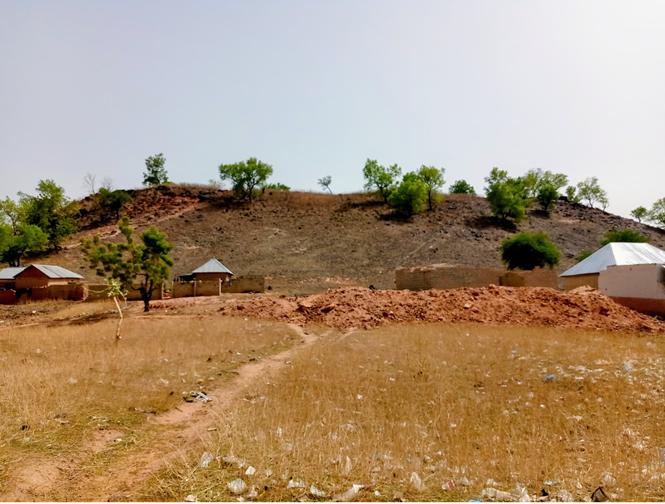Adelakun Kabir Adekunle
Increasing human activities such as agriculture and settlements threaten the ecological integrity of Yankari Game Reserve (YGR), highlighting the urgent need for conservation interventions. Across Africa, lion populations have declined drastically due to habitat loss, human-wildlife conflict, and poaching, with the West African population estimated to represent about 1.2% of the entire global population, leading to its critically endangered status according to the IUCN.

Entry path used by carnivorous animals to attack community livestock around the mountain area of YGR. © Adelakun Kabir Adekunle.
Similarly, the leopard population continues to decline and is currently classified as a vulnerable species. Unfortunately, this is the fate of many large carnivores globally, with wildlife conflict being a major contributing factor as a result of human interference and encroachment into their habitats. This human-wildlife interface poses threats to large carnivore populations, emblematic of broader declines observed across Africa. In Nigeria, lion populations have faced significant declines over the past century, prompting international concern. Yankari Game Reserve supports a crucial population of the critically endangered West African lion.
Amidst these challenges, effective conservation strategies are imperative to safeguard lion populations and their habitats within Yankari and beyond. The objectives of the study include assessing lion populations, investigating human-lion conflicts, and developing tailored conservation strategies. Utilising a mixed-methods approach encompassing field surveys, camera trapping, GIS analysis, and community engagement, the research aims to generate comprehensive insights into lion ecology and conservation within Yankari.
Furthermore, field surveys will provide data on lion sightings and habitat utilisation patterns, while camera trapping will capture images and videos of lions and their prey species. GIS analysis will be used to map habitat suitability and human-lion conflict hotspots, while community engagement activities will gather insights from local stakeholders on conservation challenges and solutions.
This research will further support conservation efforts by providing updated information on lion populations, insights into habitat utilisation patterns, identification of conflict drivers, and the development of targeted conservation strategies. Through its contributions to scientific understanding, practical applications, and integration of local knowledge, the study will also advance lion conservation efforts not only within Yankari but also in similar landscapes across Africa and beyond.